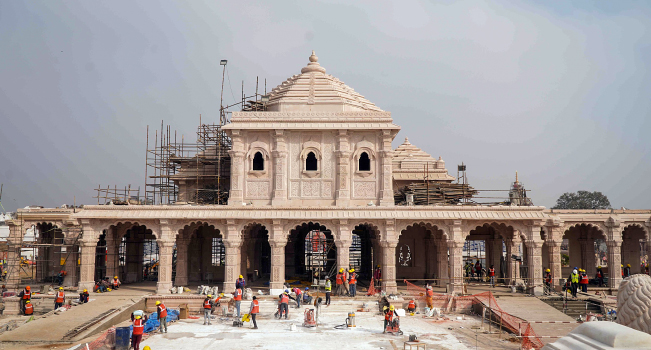The inauguration of the Ayodhya Ram Temple followed by Prana Pratishtha ceremony led to a remarkable economic boom across the country. In addition to the deep religious and cultural significance of the Ram Temple, the construction and opening of the Ram Temple affect Tourism & Economy of India.
The Ayodhya Ram temple, revered by millions, is now a catalyst for economic growth in the region. Its opening has increased religious tourism and attracts pilgrims and tourists from far and wide. This influx has not only boosted the local economy but also created more opportunities for start-ups in Ayodhya to contribute to its economic prosperity. According to reports, Ayodhya has welcomed over 2.3 million tourists by 2022, and with the completion of the Ram temple, the city is poised to attract upwards of 50 million tourists annually, further boosting its economic growth.
The Ayodhya Ram Temple, the second most expensive public monument built in recent years after the Statue of Unity, carries a huge economic impact for Uttar Pradesh. Poised to cross the Rs 4 lakh crore milestone by the end of the year, it not only promises to bolster the country’s tourism revenue but also looks forward if it generates significant tax revenue estimated at Rs 20,000-25,000 crore. The construction and inauguration of the temple marks a pivotal moment in the Indian economy, signifying the convergence of religious, cultural and economic elements As Ayodhya emerges as a center of religious and economic importance, it is planned as Ram The repercussions of the Mandir inauguration will shape the country’s economic policy in the coming years.
The construction of the Ram Temple is expected to boost religious tourism, attracting pilgrims from all over India and beyond to Ayodhya and its nearby historical sites This influx of people will significantly increase the total number of tourists in Ayodhya, and has led to economic growth in the region. Local businesses including hotels, restaurants and souvenir shops are poised to benefit from increased demand. Also, the projected increase in pilgrims and tourists may lead to new residential development in Ayodhya. A report from SBI Research shows that projects like the Ram Mandir are enjoying huge financial returns, with the dedication ceremony alone reportedly generating business worth Rs 1 lakh crore across the country. Besides, Uttar Pradesh could benefit from higher tax collection, and it could reach Rs 5,000 crore by 2024-25. Ayodhya expects to attract between 10 million and 50 million tourists annually across the globe, boosting its tourism sector and facilitating better facilities for tourists
With the construction of the Ram Temple, India is poised to transform its transport industry which includes air routes, railways and roads. The expected inflow of religious tourists leads to greater demand for railways and airlines, which is expected to boost revenues in the sectors Furthermore, the demand for local transportation services such as buses and taxis is set to increase will increase revenue in the road industry. The development of the Ram Temple requires massive infrastructure in Ayodhya, including improving roads, transport and housing These developments not only meet the needs of pilgrims but also improve the overall infrastructure of the region, leading to economic growth. Connectivity and infrastructure development can attract more investments, which can stimulate economic activities beyond the temple’s immediate vicinity.
The impact of the Ram Temple on the Indian economy is manifold, including tourism, infrastructure development, job creation, and stimulation of local trade While the immediate economic benefits are evident it is equally important to examine the long-term implications.










